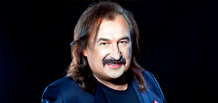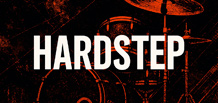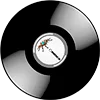Showbiz News
New Age — a contemplative genre of modern instrumental music
 New Age is a music genre that emerged in the second half of the 20th century and is focused on calm, atmospheric, and meditative soundscapes. Its primary purpose is to create a relaxing audio environment that supports rest, concentration, and inner balance.
Unlike dance or pop genres, New Age is not designed for active listening. It is music for background use, reflection, and contemplation, where overall mood and timbral depth matter more than hit structure or catchy hooks.
The origins of the genre
The New Age genre began to take shape in the 1970s, during a period of growing interest in alternative culture, minimalism, and sound experimentation. It developed alongside ambient music and overlaps with it in many ways, but generally adopts a more melodic and accessible form.
The genre was i...
New Age is a music genre that emerged in the second half of the 20th century and is focused on calm, atmospheric, and meditative soundscapes. Its primary purpose is to create a relaxing audio environment that supports rest, concentration, and inner balance.
Unlike dance or pop genres, New Age is not designed for active listening. It is music for background use, reflection, and contemplation, where overall mood and timbral depth matter more than hit structure or catchy hooks.
The origins of the genre
The New Age genre began to take shape in the 1970s, during a period of growing interest in alternative culture, minimalism, and sound experimentation. It developed alongside ambient music and overlaps with it in many ways, but generally adopts a more melodic and accessible form.
The genre was i...
Chillstep — a melodic and atmospheric subgenre of dubstep
 Chillstep is a subgenre of electronic music that emerged at the intersection of dubstep, ambient, and downtempo. Its defining characteristic is the combination of dubstep’s signature rhythm and bass structure with a soft, calm, and melodic sound.
Unlike aggressive forms of dubstep, chillstep is not designed for the dancefloor but rather for contemplative and emotional listening. The genre gained widespread popularity in online environments and is commonly used as background music for relaxation, work, and concentration.
Origins and Formation of the Genre
Chillstep began to take shape in the late 2000s and early 2010s, alongside the rapid rise of the dubstep scene. During this period, many producers started experimenting with softer and more melodic variations of the sound, moving awa...
Chillstep is a subgenre of electronic music that emerged at the intersection of dubstep, ambient, and downtempo. Its defining characteristic is the combination of dubstep’s signature rhythm and bass structure with a soft, calm, and melodic sound.
Unlike aggressive forms of dubstep, chillstep is not designed for the dancefloor but rather for contemplative and emotional listening. The genre gained widespread popularity in online environments and is commonly used as background music for relaxation, work, and concentration.
Origins and Formation of the Genre
Chillstep began to take shape in the late 2000s and early 2010s, alongside the rapid rise of the dubstep scene. During this period, many producers started experimenting with softer and more melodic variations of the sound, moving awa...
Minatrix.FM celebrates its Birthday! 15 years on air — together with you!
 December 12 is a special date for everyone who loves electronic music, club culture, and live online radio. It was on this day, back in 2010, that Minatrix.FM aired its first broadcast. No one could have imagined that a small enthusiast project would grow into the largest club portal and one of the most stable music platforms — one that survived every storm, every crisis, and even the disappearance of its competitors.
Today, Minatrix.FM continues to grow, evolve, and open its doors to new artists. And this celebration is, above all, for you — our listeners.
A bit of history we are proud of
2010 — the first broadcast. At the time, we streamed only one music channel and gathered our first listeners manually.
2012–2015 — the golden era of parties and club projec...
December 12 is a special date for everyone who loves electronic music, club culture, and live online radio. It was on this day, back in 2010, that Minatrix.FM aired its first broadcast. No one could have imagined that a small enthusiast project would grow into the largest club portal and one of the most stable music platforms — one that survived every storm, every crisis, and even the disappearance of its competitors.
Today, Minatrix.FM continues to grow, evolve, and open its doors to new artists. And this celebration is, above all, for you — our listeners.
A bit of history we are proud of
2010 — the first broadcast. At the time, we streamed only one music channel and gathered our first listeners manually.
2012–2015 — the golden era of parties and club projec...
Stepan Hyga Has Fallen Into a Coma: The People’s Artist Is in Critical Condition
 The condition of the People’s Artist of Ukraine Stepan Hyha remains critical. According to the latest reports, the artist has fallen into a coma following severe complications, making his current situation extremely serious. Doctors continue to fight for his life, while the family and his team ask the public to respect the artist’s privacy.
Emergency surgery and cancellation of concerts
It should be recalled that on November 19, Stepan Hyha underwent an emergency surgery in Lviv. Due to a sudden deterioration in his health, all scheduled performances were cancelled, including a major concert at the Kyiv Sports Palace.
The artist’s team announced at the time that his condition was serious but stable, and that he remained under constant medical supervision.
What is known no...
The condition of the People’s Artist of Ukraine Stepan Hyha remains critical. According to the latest reports, the artist has fallen into a coma following severe complications, making his current situation extremely serious. Doctors continue to fight for his life, while the family and his team ask the public to respect the artist’s privacy.
Emergency surgery and cancellation of concerts
It should be recalled that on November 19, Stepan Hyha underwent an emergency surgery in Lviv. Due to a sudden deterioration in his health, all scheduled performances were cancelled, including a major concert at the Kyiv Sports Palace.
The artist’s team announced at the time that his condition was serious but stable, and that he remained under constant medical supervision.
What is known no...
Goa Trance: the history, philosophy, and revival of the iconic psychedelic trance (TB-303)
 Goa Trance is one of the most iconic and mystical subgenres of electronic music, born on the sunny beaches of Goa and transformed into an entire philosophy of freedom, trance and spiritual journey. Today, nearly 30 years after its golden era, Goa Trance is experiencing a powerful revival: new artists are experimenting with the sound, and global festivals are bringing the style back to the main stages.
What is Goa Trance?
Goa Trance is a psychedelic subgenre of trance built around:
multi-layered acid synthesizers (TB-303 and its emulations),
ethnic and spiritual motifs,
pulsating 135–150 BPM rhythms,
hypnotic fractal melodies,
a psychedelic atmosphere and deep-trance aesthetics.
This is music that creates a journey inward, merging dance, ritual and visual psychedelia.
History: from...
Goa Trance is one of the most iconic and mystical subgenres of electronic music, born on the sunny beaches of Goa and transformed into an entire philosophy of freedom, trance and spiritual journey. Today, nearly 30 years after its golden era, Goa Trance is experiencing a powerful revival: new artists are experimenting with the sound, and global festivals are bringing the style back to the main stages.
What is Goa Trance?
Goa Trance is a psychedelic subgenre of trance built around:
multi-layered acid synthesizers (TB-303 and its emulations),
ethnic and spiritual motifs,
pulsating 135–150 BPM rhythms,
hypnotic fractal melodies,
a psychedelic atmosphere and deep-trance aesthetics.
This is music that creates a journey inward, merging dance, ritual and visual psychedelia.
History: from...
Dub Techno — depth, fog and echo. How the genre is experiencing a new revival in 2024–2025
 Dub Techno is one of the most atmospheric and meditative subgenres of techno. It is the music of fog, space, and endless echo, where every sound seems to dissolve into deep reverberation.
In recent years, the style has regained massive popularity on streaming platforms and in the club scene. Producers are returning to the analog sound of the ’90s, and listeners — to hypnotic rhythms where time seems to stop.
What is Dub Techno?
Dub Techno is techno infused with:
reverberation,
echo,
spatial delays,
soft analog textures,
deep sub-bass,
meditative minimalism,
the atmosphere of infinite space.
This is music where rhythm is the structure, and space is the main instrument.
History: From Berlin to the world
The genre was born in the early 1990s in Berlin thanks to the duo Basic Cha...
Dub Techno is one of the most atmospheric and meditative subgenres of techno. It is the music of fog, space, and endless echo, where every sound seems to dissolve into deep reverberation.
In recent years, the style has regained massive popularity on streaming platforms and in the club scene. Producers are returning to the analog sound of the ’90s, and listeners — to hypnotic rhythms where time seems to stop.
What is Dub Techno?
Dub Techno is techno infused with:
reverberation,
echo,
spatial delays,
soft analog textures,
deep sub-bass,
meditative minimalism,
the atmosphere of infinite space.
This is music where rhythm is the structure, and space is the main instrument.
History: From Berlin to the world
The genre was born in the early 1990s in Berlin thanks to the duo Basic Cha...
Synthwave — the music of neon nights and digital nostalgia. The revival of the genre in 2025
 Synthwave is one of the most iconic genres of modern electronic music, inspired by the aesthetics of the 1980s: neon lights, VHS culture, retro-futurism, analog synths, and the spirit of cyberpunk. But Synthwave is no longer just a retro sound. In 2024–2025, the genre is experiencing a new resurgence, gaining fresh sonic ideas and an updated visual wave of popularity.
What is Synthwave?
Synthwave is a style of electronic music influenced by:
80s movie soundtracks,
sci-fi atmospheres and neon megacities,
arcade video games,
analog synthesizers (Juno, Prophet, Moog),
classic cyberpunk aesthetics.
The genre is characterized by:
rich analog synths
melodic leads
retro basslines
TR-707/808 drum machines
warm nostalgia
cinematic sound design
Synthwave creates a world where the past and ...
Synthwave is one of the most iconic genres of modern electronic music, inspired by the aesthetics of the 1980s: neon lights, VHS culture, retro-futurism, analog synths, and the spirit of cyberpunk. But Synthwave is no longer just a retro sound. In 2024–2025, the genre is experiencing a new resurgence, gaining fresh sonic ideas and an updated visual wave of popularity.
What is Synthwave?
Synthwave is a style of electronic music influenced by:
80s movie soundtracks,
sci-fi atmospheres and neon megacities,
arcade video games,
analog synthesizers (Juno, Prophet, Moog),
classic cyberpunk aesthetics.
The genre is characterized by:
rich analog synths
melodic leads
retro basslines
TR-707/808 drum machines
warm nostalgia
cinematic sound design
Synthwave creates a world where the past and ...
Glam Rock - the glittering revolution of music.
 Glam Rock is a style that turned music into more than sound — it became a true spectacle. It’s a genre where glitter, theatrics, eccentricity, and powerful guitar riffs merge into one big show.
And in 2025, interest in Glam Rock is skyrocketing again. From fashion and film to pop music and TikTok — the glam-rock aesthetic is returning brighter than ever.
What Is Glam Rock?
Glam Rock is a musical and visual movement of the early 1970s, characterized by:
sparkling costumes, platform boots, and flamboyant makeup,
theatrical performance style,
simple yet powerful guitar riffs,
a blend of rock, pop, and glitter aesthetics,
eccentric characters who built entire worlds on stage.
It’s music where the artist can be a superhero, an alien, an underground dandy, or ...
Glam Rock is a style that turned music into more than sound — it became a true spectacle. It’s a genre where glitter, theatrics, eccentricity, and powerful guitar riffs merge into one big show.
And in 2025, interest in Glam Rock is skyrocketing again. From fashion and film to pop music and TikTok — the glam-rock aesthetic is returning brighter than ever.
What Is Glam Rock?
Glam Rock is a musical and visual movement of the early 1970s, characterized by:
sparkling costumes, platform boots, and flamboyant makeup,
theatrical performance style,
simple yet powerful guitar riffs,
a blend of rock, pop, and glitter aesthetics,
eccentric characters who built entire worlds on stage.
It’s music where the artist can be a superhero, an alien, an underground dandy, or ...
K-Pop — the vibrant world of Korean pop music. A complete guide to the genre on Minatrix.FM
 K-Pop (Korean Pop) is one of the most influential modern music movements, combining pop sound, dance aesthetics, visual artistry, and a powerful idol industry. It is more than just music — it is a cultural phenomenon that has taken over the world, shaping a new era of global pop culture.
On Minatrix.FM, you can listen online and download the best K-Pop tracks in MP3 320 kbps — from legendary groups to fresh debuts, from soft ballads to powerful dance hits. Our catalog is updated regularly and includes both global chart-toppers and promising artists of the new waves.
What is K-Pop?
K-Pop is the South Korean music industry that brings together multiple genres:
pop
EDM
hip-hop
R&B
trap
future bass
retro sounds (disco, funk, synthwave)
The key feature of K-Pop is full multi-g...
K-Pop (Korean Pop) is one of the most influential modern music movements, combining pop sound, dance aesthetics, visual artistry, and a powerful idol industry. It is more than just music — it is a cultural phenomenon that has taken over the world, shaping a new era of global pop culture.
On Minatrix.FM, you can listen online and download the best K-Pop tracks in MP3 320 kbps — from legendary groups to fresh debuts, from soft ballads to powerful dance hits. Our catalog is updated regularly and includes both global chart-toppers and promising artists of the new waves.
What is K-Pop?
K-Pop is the South Korean music industry that brings together multiple genres:
pop
EDM
hip-hop
R&B
trap
future bass
retro sounds (disco, funk, synthwave)
The key feature of K-Pop is full multi-g...
Hard IDM — the intellectual brutality of electronic music. A new chapter for the genre in 2025
 Hard IDM (Hard Intelligent Dance Music) is one of the most conceptual and “intellectually aggressive” branches of electronic music. If classic IDM is atmospheric, experimental and cerebral, then Hard IDM adds power, chaos, industrial force and harsh rhythmic structures to this mathematical foundation.
In 2024–2025 the style is experiencing a noticeable revival: young producers are returning to the mechanical, cybernetic sound of the ’90s, enhancing it with modern sound-design technologies, glitch aesthetics and aggressive fractal structures.
What Is Hard IDM?
Hard IDM is a substyle of IDM that combines:
aggressive beat structures,
glitch-driven mechanical rhythms,
chaotic but mathematically precise patterns,
abstract synthesis,
heavy industrial textures,
irregul...
Hard IDM (Hard Intelligent Dance Music) is one of the most conceptual and “intellectually aggressive” branches of electronic music. If classic IDM is atmospheric, experimental and cerebral, then Hard IDM adds power, chaos, industrial force and harsh rhythmic structures to this mathematical foundation.
In 2024–2025 the style is experiencing a noticeable revival: young producers are returning to the mechanical, cybernetic sound of the ’90s, enhancing it with modern sound-design technologies, glitch aesthetics and aggressive fractal structures.
What Is Hard IDM?
Hard IDM is a substyle of IDM that combines:
aggressive beat structures,
glitch-driven mechanical rhythms,
chaotic but mathematically precise patterns,
abstract synthesis,
heavy industrial textures,
irregul...
Bass House in 2025: Key Trends, Leading Artists, and the Revival of the Genre | Minatrix.FM News
 Bass House is one of the most high-energy subgenres of modern electronic music, combining heavy bass sound design with the drive of house music. It’s a style created for dancefloors, festivals, and explosive club sets.
In 2025, Bass House is experiencing a new wave of popularity, blending with tech house, UK bass, speed house, and various EDM influences. Artists are pushing the boundaries, reshaping basslines and creating tracks that instantly turn into festival anthems.
What Is Bass House?
Bass House is a hybrid of house rhythms and the heavy bass sound typical of dubstep, UK bass, and complextro.
Main characteristics of the sound:
aggressive basslines
thick sub-bass and growl effects
a tight groove around 126–130 BPM
bright synths and gritty modulations
a strong club atmosph...
Bass House is one of the most high-energy subgenres of modern electronic music, combining heavy bass sound design with the drive of house music. It’s a style created for dancefloors, festivals, and explosive club sets.
In 2025, Bass House is experiencing a new wave of popularity, blending with tech house, UK bass, speed house, and various EDM influences. Artists are pushing the boundaries, reshaping basslines and creating tracks that instantly turn into festival anthems.
What Is Bass House?
Bass House is a hybrid of house rhythms and the heavy bass sound typical of dubstep, UK bass, and complextro.
Main characteristics of the sound:
aggressive basslines
thick sub-bass and growl effects
a tight groove around 126–130 BPM
bright synths and gritty modulations
a strong club atmosph...
Comedy Rap — humor, punchlines, and viral hits: how the style is taking over the internet
 Comedy Rap is the funniest and boldest subgenre of hip-hop, experiencing a new surge in popularity in 2024–2025. In the era of TikTok, memes, Vines and influencers, this style has become one of the fastest-growing movements, where humor, self-irony, parody and wordplay are transformed into full-fledged music hits.
Comedy Rap proves that rap doesn’t have to be aggressive or socially charged — it can be bright, funny and insanely creative.
What is Comedy Rap?
Comedy Rap is humor-based hip-hop. Instead of crime stories, battles and serious topics, it focuses on jokes, absurdity, meme-style lyrics and unusual characters.
Typical elements of the genre:
witty punchlines and wordplay
parodies of trends and other artists
exaggerated and comedic personas
ironic beats and cartooni...
Comedy Rap is the funniest and boldest subgenre of hip-hop, experiencing a new surge in popularity in 2024–2025. In the era of TikTok, memes, Vines and influencers, this style has become one of the fastest-growing movements, where humor, self-irony, parody and wordplay are transformed into full-fledged music hits.
Comedy Rap proves that rap doesn’t have to be aggressive or socially charged — it can be bright, funny and insanely creative.
What is Comedy Rap?
Comedy Rap is humor-based hip-hop. Instead of crime stories, battles and serious topics, it focuses on jokes, absurdity, meme-style lyrics and unusual characters.
Typical elements of the genre:
witty punchlines and wordplay
parodies of trends and other artists
exaggerated and comedic personas
ironic beats and cartooni...
Hardcore Continuum: The Evolution of British Bass Music — Jungle, Grime, Dubstep, UK Garage.
 Hardcore Continuum is not a single genre, but an entire musical lineage that has shaped the development of the UK electronic scene for over 30 years. From 90s hardcore rave to jungle, garage, grime, dubstep and even UK bass — all these styles are connected by a shared energy, aesthetic and cultural DNA.
Today, interest in the Hardcore Continuum is rising again as musicians and listeners return to the roots of the UK bass sound.
What is the Hardcore Continuum?
The term was introduced by music critic Simon Reynolds to describe the continuous evolution of UK dance music, built on three core pillars:
breakbeat-driven rhythms
deep sub-bass
street energy and DIY culture
Hardcore Continuum is not a genre. It’s a living ecosystem where each new style grows logically from the previous...
Hardcore Continuum is not a single genre, but an entire musical lineage that has shaped the development of the UK electronic scene for over 30 years. From 90s hardcore rave to jungle, garage, grime, dubstep and even UK bass — all these styles are connected by a shared energy, aesthetic and cultural DNA.
Today, interest in the Hardcore Continuum is rising again as musicians and listeners return to the roots of the UK bass sound.
What is the Hardcore Continuum?
The term was introduced by music critic Simon Reynolds to describe the continuous evolution of UK dance music, built on three core pillars:
breakbeat-driven rhythms
deep sub-bass
street energy and DIY culture
Hardcore Continuum is not a genre. It’s a living ecosystem where each new style grows logically from the previous...
Angelcore — The Heavenly Aesthetic in Music: The Style Taking Over the Internet | Minatrix.FM News
 Angelcore is a new sensitive and atmospheric music style that is rapidly gaining popularity on the internet, TikTok, SoundCloud, and among young electronic music producers. It blends dreaminess, purity, and emotional depth, creating a unique sound that feels as if it descended straight from the heavens.
In 2024–2025, Angelcore evolved from a niche internet aesthetic into a full-fledged music movement with a growing community of artists and listeners.
What is Angelcore?
Angelcore is a mixture of ambient, ethereal wave, dream pop, witch house, heavenly vocals, as well as elements of hyperpop, trance, and lo-fi.
Main characteristics:
airy, “heavenly” synthesizers
crisp, shimmering arpeggios
angelic vocal samples
soft beats (dream pop / trip-hop inspired)
heavy use of reverb...
Angelcore is a new sensitive and atmospheric music style that is rapidly gaining popularity on the internet, TikTok, SoundCloud, and among young electronic music producers. It blends dreaminess, purity, and emotional depth, creating a unique sound that feels as if it descended straight from the heavens.
In 2024–2025, Angelcore evolved from a niche internet aesthetic into a full-fledged music movement with a growing community of artists and listeners.
What is Angelcore?
Angelcore is a mixture of ambient, ethereal wave, dream pop, witch house, heavenly vocals, as well as elements of hyperpop, trance, and lo-fi.
Main characteristics:
airy, “heavenly” synthesizers
crisp, shimmering arpeggios
angelic vocal samples
soft beats (dream pop / trip-hop inspired)
heavy use of reverb...
Hardstep: the most aggressive subgenre of Drum & Bass, Techstep, Darkstep
 Hardstep is one of the hardest and most aggressive subgenres of drum & bass, and in 2025 it is unexpectedly experiencing a new wave of popularity. Rough rhythms, metallic kicks, fast breaks and a predatory energy — all of this is once again heard at raves, in online DJ sets and in new releases from producers around the world.
Why is Hardstep coming back, and what makes it so unique? We break it down in a fresh Minatrix.FM news feature.
What is Hardstep?
Hardstep is DnB in its most punishing, straight-to-the-point form. If jungle was chaotic and “wild”, Hardstep became its heavier, more industrial continuation.
Its key traits:
low, “dirty” bass,
heavy drum grids (1/16 patterns + aggressive breaks),
sharp snares,
metallic textures,
elements borrowe...
Hardstep is one of the hardest and most aggressive subgenres of drum & bass, and in 2025 it is unexpectedly experiencing a new wave of popularity. Rough rhythms, metallic kicks, fast breaks and a predatory energy — all of this is once again heard at raves, in online DJ sets and in new releases from producers around the world.
Why is Hardstep coming back, and what makes it so unique? We break it down in a fresh Minatrix.FM news feature.
What is Hardstep?
Hardstep is DnB in its most punishing, straight-to-the-point form. If jungle was chaotic and “wild”, Hardstep became its heavier, more industrial continuation.
Its key traits:
low, “dirty” bass,
heavy drum grids (1/16 patterns + aggressive breaks),
sharp snares,
metallic textures,
elements borrowe...
Welcome to the Minatrix FM News page — the place where the latest music trends and radio updates are always alive! We’ve gathered for you the freshest news about your favorite artists, exclusive interviews, show announcements, and much more.
What will you find on the Minatrix FM News page?
- Music Releases: Stay updated with the hottest new tracks from famous artists and rising stars.
- Show Announcements: Get informed in advance about upcoming shows, interviews, and special editions.
- Artist Interviews: Read exciting conversations with your favorite performers, their inspirations, and new projects.
- Radio Station Updates: Keep track of schedule changes, new projects, and Minatrix FM initiatives.
- Top Charts: Discover the most popular tracks playing on-air right now.
- Party & Festival Schedule: Follow the dates and locations of major music events organized by Minatrix FM or featuring your favorite artists.
We do everything to be your guide in the world of modern music and radio. Minatrix FM is not just a radio station, but also a source of inspiration for all music lovers.
Subscribe to updates to be the first to know about news and events!
Join Minatrix FM — together we make the world of music brighter!
Visit Minatrix FM News right now and find out what’s happening in the music industry.

